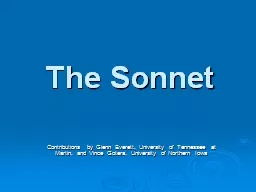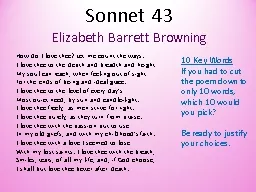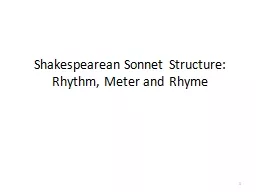PPT-Sonnet Review
Author : alida-meadow | Published Date : 2016-02-19
Sonnet is a 14 line poem written in iambic pentameter Employs one of several rhyme schemes Adheres to a tightly structured thematic organization The poet introduces
Presentation Embed Code
Download Presentation
Download Presentation The PPT/PDF document "Sonnet Review" is the property of its rightful owner. Permission is granted to download and print the materials on this website for personal, non-commercial use only, and to display it on your personal computer provided you do not modify the materials and that you retain all copyright notices contained in the materials. By downloading content from our website, you accept the terms of this agreement.
Sonnet Review: Transcript
Download Rules Of Document
"Sonnet Review"The content belongs to its owner. You may download and print it for personal use, without modification, and keep all copyright notices. By downloading, you agree to these terms.
Related Documents














